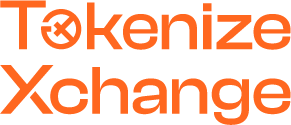NFT Marketplace: Things You Need to Know
The total trading volume across all NFT marketplaces was $862 million in January, up 85 percent from December. The number of significant marketplaces has increased to 40, according to Footprint Analytics. As digital collectibles become unglued from the price of Bitcoin, NFTs will likely continue to proliferate as they exhibit resiliency to broader market dynamics. And therefore, Tokenize is here to assist you in finding the proper NFT marketplace to buy and sell NFTs.

What is NFT?
NFT stands for “Non-fungible token.” These tokens represent unique ownership of a digital asset, be it things related to art, collectibles, or in-game characters and items.
Each NFT has only one owner at a time, and they are secured by a certain blockchain. No one has the right to copy or modify the ownership of an existing NFT.
Each NFT has its own digital signature, making it impossible for them to be peer-to-peer. A simple example would be two items in a game, both of which are NFTs but not of the same value.
Choosing an NFT exchange

Token standard
There are plenty of blockchains that support NFT, including Ethereum, Solana, Flow, etc. Each blockchain has different token standards. Understanding the token standards helps you choose an exchange that supports your NFTs. If you send your NFTs to an exchange that does not support the right token standard, you will lose them forever. Some popular standard tokens can be mentioned as:
Ethereum
- ERC-721: For single assets, ERC-721 creates non-fungible tokens. ERC-721’s principal purpose is to register copyright ownership. Because it can preserve transaction history, another essential feature of this token standard is its potential to handle royalty payments linked with each resale of the NFT.
- ERC-1155: Because it is compatible with both fungible and non-fungible assets, ERC-1155 is a global token standard for NFT on the Ethereum network. It allows you to produce and manage tokens of various standards all in one transaction. The only disadvantage of ERC-1155 tokens is that they cannot preserve transaction history because the assets utilized in an ERC-1155 smart contract have their own transaction histories separate from ERC-1155.
Solana
Solana NFTs are minted based on a specific standard, SPL. SPL stands for “Solana Program Library,” which refers to Solana’s collection of on-chain programs. The “Sealevel” parallel runtime – one of eight essential Solana technologies – is the target of those on-chain programs. Solana’s “Token Program” also defines a common implementation for fungible and non-fungible tokens on its blockchain.
Flow
Flow allows users to handle fungible and non-fungible ZIP-12 tokens, which are designed on the Tezos blockchain. The ability to incorporate an IPFS hash into a Tezos-based coin is its key feature.
Despite its many benefits, the token standard is not widely used, and there are only a handful of unique assets based on it. If you elect to acquire a TZIP-12-based NFT, however, you will just have to pay a minimal charge, making this blockchain incredibly user-friendly.
NFT Marketplaces’ reputation
A reputed NFT marketplace is the one that can provide users with comprehensive project information, such as the number of NFTs available for purchase, the price of each NFT, and more in-depth information, such as the number of buys and sells, holders, and historical trading data.

Moreover, to safeguard both creators and buyers, a marketplace must have a highly secure environment. Advanced encryption of some sensitive information, as well as identity verification and transaction insurance to avoid fraud, are examples. Users should also look around on the internet for any bad information or security issues before using the exchange. In addition, you can also refer to the ratings and comments of other users to determine the reputation of the NFT exchange.
Trading fee
Each NFT exchange has a different trading fee. But most of these fees are considerably higher than regular spot trading fees. There are various exchanges that charge up to 10% of the value of NFT sold. If your NFT has a high value, $10,000 for example, when the transaction is completed, you will lose $1,000 in fees. It is a significant number to consider before choosing a suitable marketplace.
Wallet compatibility
Without support for fiat, the NFT marketplace ecosystem is missing a piece. Users must first deposit money into their wallets before minting or purchasing NFTs. So that, you will feel more comfortable with a platform that integrates a variety of wallets, or even better, the one you prefer. To provide a positive user experience and ensure the safety of your cash, the integration should be simple, smooth, and secure. Furthermore, the NFT marketplace should accommodate consumers who choose to connect with credit cards rather than only wallets.
Bottom line
NFTs have been becoming more and more popular since NFTs explosively grew in 2021. But choosing where to trade your NFT is not an easy job. Users must consider many factors to choose the right NFT marketplace. Follow Tokenize Blog for more interesting articles.
Disclaimer
Cryptocurrencies are subjected to high market risk and volatility despite high growth potential. Users are strongly advised to do their research and invest at their own risk.


